-
Reasons to Refinance
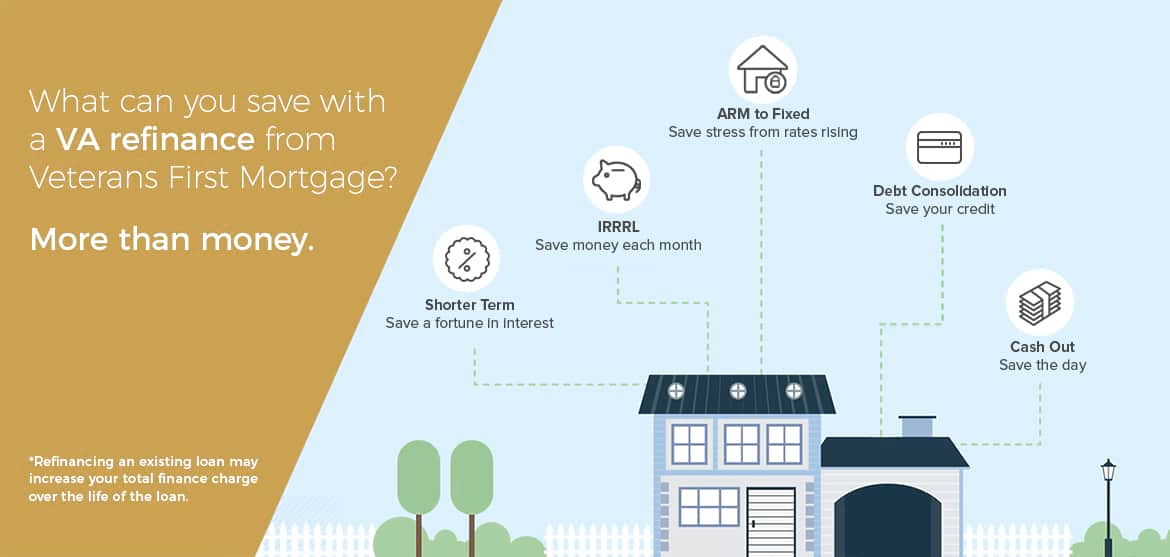

Why Should I Refinance?
A VA refinance loan may be a good option for you if you can check off one or more of the following:
VA Refinance Loans for Lower Interest Rates and Monthly Payments
VA refinance loans can save you money by reducing your interest rate, monthly mortgage payment, or both. If you already have a VA loan, the VA streamline refinance loan, also known as an IRRRL, may be your best option. VA streamline refinances require no new Certificate of Eligibility (COE), often no new VA appraisal, and typically less effort on behalf of the borrower.
Refinancing to Add or Remove a Co-Borrower
If you’re getting married, consciously uncoupling, or anything in between, a refinance loan may help you improve your financial outlook. Adding or removing a name on your mortgage can satisfy a court order, or put you in a better personal or financial position. A VA refinance loan may be just what you need to improve your financial (and, perhaps, personal) life.
Build Equity Faster by Refinancing to a Shorter Term
Did you know you may be able to save a significant amount of cash in interest with a shorter term mortgage? Refinancing your 30-year mortgage to a 15-, 20-, or 25-year VA loan may cut thousands of dollars in total interest from your payments over time. Thanks to the competitively low interest rates of VA loans, some borrowers find that their mortgage payments don’t increase much, or actually go down when refinancing to a shorter term. If you choose a shorter term mortgage, you can build equity faster because more of your monthly payment goes toward paying down your loan balance.
Get Cash for Life's Important Expenses
A VA cash-out refinance loan can turn your home’s equity into cash for important expenses. Maybe you have looming credit card debt, medical bills, or are excited to add a new pool to your backyard. Cash-out refinancing can be an effective way to use the equity in your home to pay for these expenses. It’s important to take into account that this type of refinance loan may increase your mortgage balance and total finance fees over the life of your loan. VA cash-out loans may provide you with lower-interest financing when compared to credit cards, personal loans, and short-term home equity loans, which often have high interest rates. Many borrowers find that they’re able to write off mortgage interest on their taxes.*
A VA Refinance May Eliminate Mortgage Insurance
If you have a conventional, U.S. Department of Agriculture (USDA) loan, or Federal Housing Authority (FHA) loan, a VA refinance loan would eliminate any need for mortgage insurance. While VA loans do require a funding fee (called the VA Funding Fee) for borrowers who are not exempt, many Veterans are able to save $100 or more each month by not paying for mortgage insurance on top of their mortgage payments. These savings can be put to use in other ways, such as investing in retirement, college savings, or emergency funds.
Current VA Borrowers May Be Eligible for VA Streamline Refinance Loans
If you already have a VA loan, you may be able to get a VA streamline refinance loan for a lower interest rate, lowering your monthly payment. Because you won’t need to go through many of the VA loan steps – like obtaining a new COE – a VA streamline refinance is a great way to reduce your interest rate with fewer steps, and generally with lower fees.
Switch From an ARM to a Fixed-Rate Loan
You can use a VA refinance loan to lock into a fixed-rate mortgage and save yourself the stress of rate fluctuations and market uncertainty. Adjustable-rate mortgages (ARMs) can be attractive because, initially, they often have very low interest rates. And if you plan to move within a few years, like many servicemembers, an ARM can be a very cost-effective mortgage option. But once the initial low interest rate period is over – if you want to stay in the home – your interest rate may increase significantly. Many borrowers have found consistency and peace mind by switching to a fixed-rate loan.
If you have questions, a loan officer can help you explore the differences to make the best choice.
* Please consult with your tax advisor. This information is not intended to constitute legal or tax advice.
-
Types of Refinance Loans
In evaluating your options for a VA refinance, it’s helpful to understand what the VA program offers. Essentially, there are two types of VA refinance loans: the VA streamline refinance loan (IRRRL) and the cash-out loan. A “cash-out” loan doesn’t necessarily require you to take cash out. Let’s examine these refinance programs and how they can work for you.
VA Streamline Refinance
A VA streamline refinance, also known as an Interest Rate Reduction Refinance Loan (IRRRL), has a very specific purpose: to reduce your interest rate on your current VA loan. If you already have a VA loan, you may be able to get a VA streamline refinance loan for a lower interest rate and a lower monthly payment. Advantages of this program include:
- No new COE
- Reduced funding fee of 0.5% (waived for some)
- Less paperwork overall, leading to streamlined processing
- No appraisal required by the VA (lender requirements may vary)
A VA streamline refinance is a great way to reduce your interest rate with an often simpler process than that of a typical refinance. You can typically use the same COE you obtained for your current VA loan. In addition, due to fewer steps, the loan can be less costly and can often be processed more quickly.
VA Cash-Out Refinancing
As its name implies, a VA cash-out loan can be used to turn your home’s equity into cash. Often, borrowers use the funds to cover credit card debt, a second mortgage, medical bills, college tuition, a home remodel, or high-interest loans.
Why Do You Need Cash?
Debt consolidation

Medical
bills
Home improvements

College tuition

Major purchase

Life's emergencies
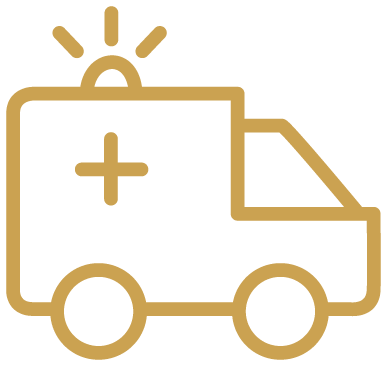
Other Reasons for a Cash-Out Refinance
While it’s technically called a “cash-out refinance,” you don’t always need to take out cash with this full refinance option. When you use the loan this way, you aren’t cashing out your home’s equity by adding to your loan principal. This can be a good option if you don’t already have a VA loan and want to get a lower interest rate or monthly payment, eliminate monthly mortgage insurance, switch from an ARM to a fixed-rate loan, or shorten the duration of your mortgage from, say, a 30- to a 15-year loan.
-
Debt Consolidation
If you’re a VA-eligible borrower with high interest credit cards or other revolving debt, you may be able to use a VA cash-out refinance for debt consolidation. Having equity in your home is key to using your VA home loan benefit for debt consolidation. If you do have equity in your home, you may be able to turn it into cash with a VA cash-out refinance loan to pay down that debt.
Must Haves for
VA Cash-Out Debt ConsolidationVA
eligibility
Qualifying credit (according to lender guidelines)

Ability to repay the new loan

Equity
in your home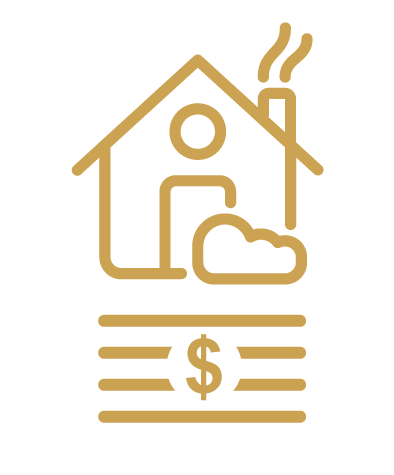
With a VA cash-out refinance loan, your existing mortgage is replaced with a new VA home loan. Your new loan has a higher principal balance because you’re financing other debt balances into your new mortgage.
Benefits of Debt Consolidation With a VA Cash-Out Refinance
- Refinance up to 90% of your home’s value
- Reduced overall monthly debt payment
- Mortgage interest may be tax deductible*
Do I Need an Existing VA Mortgage?
You don’t need a current VA mortgage to get a VA cash-out refinance loan. If you have a conventional or FHA loan, and are eligible for VA home loan benefits, VA debt consolidation is an option to consider.
Is Qualifying for VA Cash-Out Debt Consolidation Difficult?
To qualify for a VA cash-out refinance, your credit score and debt-to-income (DTI) ratio must be within the lender’s required ranges. At Veterans First, the minimum credit score for a VA consolidation loan is in the mid 600s. And DTI ratios for approved loans are commonly below 43%. However, there is some wiggle room for borrowers with higher residual income.
For more information about using VA home loan benefits for debt consolidation, contact one of our experienced VA loan professionals.
* Please consult with your tax advisor. This information is not intended to constitute legal or tax advice.
-
The Refinance Process
While no two borrowers are identical, there are common steps in refinancing with a VA loan. The refinance process can often be completed quickly. At Veterans First, our average refinance loan takes less than 30 days to process.
Common Checkpoints
in the VA Refinance ProcessObtain
your COE
You can do this online at the VA benefits portal or ask your lender to assist you. Either way, this is an important document if you plan to use your VA home loan benefits for a refinance. VA streamline refinances do not require a new COE.
Get an
Appraisal
A VA appraisal for a refinance loan may or may not be necessary depending on your circumstances and your lender’s requirements. A fresh assessment of your home’s value by a certified VA appraiser is generally required for a cash-out refinance.
Complete
Your Application
For the lender to process your refinance application, you will need to provide documents. Among the documents commonly requested are those that show your income and assets. The lender will evaluate your file, including your credit history, income and debts, and the property, to determine your ability to qualify for a loan. Additional documents may be requested in order to provide clarity or validation of aspects of your file. Once this process is complete, you’ll receive final approval for your loan.
Close
the Loan
The final step is to close your loan. You’ll review your final numbers with your loan officer, and attend your closing to sign all your loan documents. Once that’s done, you will be able to realize the benefits of your home loan refinance.
A VA Streamline Refinance Can Be a Simple Solution
If you already have a VA loan, you may be able to qualify for a VA streamline refinance loan (IRRRL). VA streamline refinances are just that – streamlined. With no new COE required and in some cases no new appraisal, streamline refinance loans may require less paperwork than regular refinance loans. Combined with relatively faster processing, VA streamline refinances often result in faster funding times. Borrowers value the simplified process and the quick turnaround so they can start saving on their monthly payment.
-
Refinance Rates and Fees
Some borrowers are surprised to discover how competitive the rates on a VA refinance loan can be.
Rates and Costs
You can expect VA loan rates to be reasonable and very competitive when compared to conventional loan rates. The VA limits the fees that can be charged on VA home loans. Allowable fees include:
*A complete list of fees can be found in VA Pamphlet 26-7, Chapter 8.
- Origination fee of up to 1%
- VA Funding Fee (unless borrower is exempt)
- Reasonable interest rate discount points
- VA appraisal fee
- Credit report fee
- Prepaid fees for escrow (e.g., taxes, insurance, etc.)
- Any other closing costs (e.g., title insurance costs, recording fees, etc.)
Forbidden Fees and PMI in a VA Refinance
VA refinancing has its advantages, including the way the VA forbids certain fees that are often charged on other types of refinances. The VA regulates the fees that can and cannot be charged when using your home loan benefit. Examples of the VA’s forbidden fees include real estate commissions and attorney fees.
Most notably, the VA home loan programs eliminate the need for paying private mortgage insurance, or PMI. Generally, PMI is required when a borrower has less than 20 percent equity in the property.
How Much Is the VA Funding Fee?
Calculate Your Own VA Funding FeeApril 7, 2023 - November 15, 20310%down payment3.30%Fee for repeat use2.15%Fee for first-time use5%OR MOREdown payment1.50%Fee for repeat use1.50%Fee for first-time use10%OR MOREdown payment1.25%Fee for repeat use1.25%Fee for first-time useSave With Streamlines and AssumptionsEverybody(Unless Exempt)0.5%funding feeWho Doesn't Pay(Funding Fee Is Waived)Certain Disabled Veterans**Some Surviving Spouses***0%funding fee0%funding feeWhat is the VA Funding Fee?It's a charge required by the VA from most VA borrowers to defray costs to run the home loan program. The fee is based on the type of loan, your past VA benefit usage, your down payment amount, and your military status. It can range from 0.5 percent to 3.6 percent. The VA will waive it for some spouses, certain disabled Veterans, and Purple Heart recipients. The buyer can pay the fee at closing or may roll it into their loan, or the seller can agree in the sales contract to pay it on the borrower’s behalf.How does the VA Funding Fee help borrowers?VA backs about 25 percent of each loan. VA backing reduces risk to lenders. In turn, lenders can offer VA loans with more favorable terms like:- Competitive interest rates
- Straightforward qualifying
- No monthly private mortgage insurance (PMI)
- No penalty for early payoff
Can the seller pay this fee?Yes! When you're making your offer to buy a home, you can ask the seller to pay closing costs and concessions. It's OK for the seller to pay up to all of your closing costs and up to 4 percent in additional concessions that may sweeten your deal. The VA Funding Fee would fall under the concessions category. If agreed, the seller can pay this cost for you at closing time. Whether the owner will pay is typically based on their motivation level to sell. -
Do I Qualify?
VA Refinance Requirements
VA refinance loans have credit and income requirements that are similar to purchase loans. Understanding the features and requirements of the VA refinance programs can help you determine which program to use.
Here are some of the key
requirements and attributes associated with the
VA refinance programs.Reasons to Refinance
VA Streamline (IRRRL) Refinance Loan
If you already have a VA loan, use this program to get a lower rate, term, or to change to a fixed rate.
Cash-Out Refinance Loan
If you have a VA or non-VA loan, use this program to get new terms. It can also provide cash out of equity.Interest Rate
VA Streamline (IRRRL) Refinance Loan
Your new rate will be lower than what you have now (unless you had an ARM).
Cash-Out Refinance Loan
Your new rate will not necessarily be lower than what you have now.Monthly Payment Amount
VA Streamline (IRRRL) Refinance Loan
Your new monthly payment will be less than what you’re paying now (unless you’re refinancing an ARM, shortening a term, or including energy efficiency improvements).
Cash-Out Refinance Loan
Your new payment may be higher or lower than what you pay now.Maximum Loan
VA Streamline (IRRRL) Refinance Loan
Your new VA loan balance can include your current balance, any allowable fees, up to two discount points, any energy efficiency improvement costs, and the VA funding fee.
Cash-Out Refinance Loan
Your new loan balance can include up to 90 percent of your home’s appraised value, plus any energy efficiency improvement costs and the VA Funding Fee.Entitlement
VA Streamline (IRRRL) Refinance Loan
You re-use your entitlement from your current VA loan.
Cash-Out Refinance Loan
You must have enough entitlement available to back your new loan.Fees and Charges in the Loan
VA Streamline (IRRRL) Refinance Loan
You can roll in all allowable fees and charges, including up to two discount points.
Cash-Out Refinance Loan
You can pay allowable fees, charges, and points from the money you take out.Fee Recoupment
VA Streamline (IRRRL) Refinance Loan
Your fees for the loan must be recouped within 36 months, unless you’re shortening your term or going from an ARM to a fixed-rate loan.
Cash-Out Refinance Loan
No fee recoupment policy exists.Cash to Borrower
VA Streamline (IRRRL) Refinance Loan
You are not allowed to get cash out with this program.
Cash-Out Refinance Loan
You can get cash out of your equity for approved purposes.Refinance of Other Liens
VA Streamline (IRRRL) Refinance Loan
You can only refinance the current VA loan, but no other liens on the property, such as a second mortgage or HELOC (home equity line of credit).
Cash-Out Refinance Loan
You can refinance any other lien on the property.Maximum Loan Term
VA Streamline (IRRRL) Refinance Loan
You can add up to 10 years to your current loan term, as long as it doesn’t go over 30 years + 32 days.
Cash-Out Refinance Loan
Your new loan term can be up to 30 years + 32 days.Occupancy
VA Streamline (IRRRL) Refinance Loan
You need to certify that you once occupied the home, unless you are currently on active duty.
Cash-Out Refinance Loan
You need to certify that you, your spouse, or your dependent child will occupy the home as a primary residence.Appraisal
VA Streamline (IRRRL) Refinance Loan
If discount points are on the loan then an appraisal is required (lender requirements may vary).
Cash-Out Refinance Loan
An appraisal is required.Net Tangible Benefit (NTB) Test
VA Streamline (IRRRL) Refinance Loan
Your new loan must pass an NTB test, indicating that a reduction in interest rate is enough to be of benefit to you as the borrower, according to the VA’s standards.
Cash-Out Refinance Loan
No NTB requirements exist.Seasoning
VA Streamline (IRRRL) Refinance Loan
You must have held your prior loan for 210 days since the date of your first payment before you can refinance.
Cash-Out Refinance Loan
Seasoning requirements apply when the principal amount of the new loan is less than the loan being refinanced. In that case, you must have held the loan for 210 days since the date of your first payment before you can refinance.Credit Underwriting
VA Streamline (IRRRL) Refinance Loan
The VA requires no underwriting except in certain cases, but lender requirements may vary.
Cash-Out Refinance Loan
The VA requires full credit information, and underwriting is required.Your loan officer can explain how these details apply to your individual situation and goals.
-
FHA Refinance Loans
FHA refinances are loans insured by the Federal Housing Administration. Explore the advantages of an FHA refinance, compare VA and FHA loans, and get answers to some frequently asked questions about refinancing using an FHA loan.
Advantages of an FHA Refinance
FHA loans, like VA loans, are federally backed, and offer a set of advantages. For instance, borrowers can finance up to 97.75% of their home’s value. But there are more reasons to consider going with an FHA refinance loan.
5 Advantages of an FHA Refinance
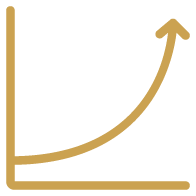
Financing up
to 97.75%
loan-to-value
(85% for cash out)
Limits
on
closing
costs
Straightforward qualifying

No penalty
for early
payoff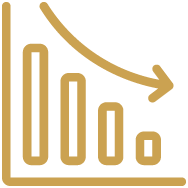
Competitive
interest
ratesHow Are FHA and VA Refinance Loans Different?
Both FHA and VA refinance loan programs have relaxed qualifying standards, competitive rates, streamlined refinancing options, and no prepayment penalties. Both VA and FHA loan programs require owner occupancy. Here are the program distinctions:
< Eligibility >
VA Refinance:Only for eligible Veterans, servicemembers, and surviving spouses
FHA Refinance:Available to all U.S. citizens 18 and older
< Cash Out >
VA Refinance:Up to 100% refinancing (including cash out)
FHA Refinance:Up to 97.75% refinancing (and up to 85% for cash-out loans)
< Insurance >
VA Refinance:No private mortgage insurance
FHA Refinance:Upfront mortgage insurance premium (UFMIP) paid up front or rolled into loan
< Upfront Fees >
VA Refinance:VA Funding Fee paid up front or rolled into loan (waived for some)
FHA Refinance:Requires a monthly mortgage insurance premium (MMIP)
Watch the video below to learn more about the differences between VA and FHA loans.
Top FHA Refinance FAQs
VA Loan Advantages
Looking To Buy a Home? Veterans First Can Help!
Helping our Veterans understand the home loan options available to them and what might work best in their unique situations is our priority. We’re here to walk you through the homebuying process, step by step, so you can achieve your American dream.
Learn More
Watch Our Clients on TV
Featured on Lifetime
In a Veteran’s journey to homeownership, specialized expertise and personal attention can make all the difference. Watch our clients describe how their Veterans First loan team stepped them through the process to accomplish their goals.
Watch the video